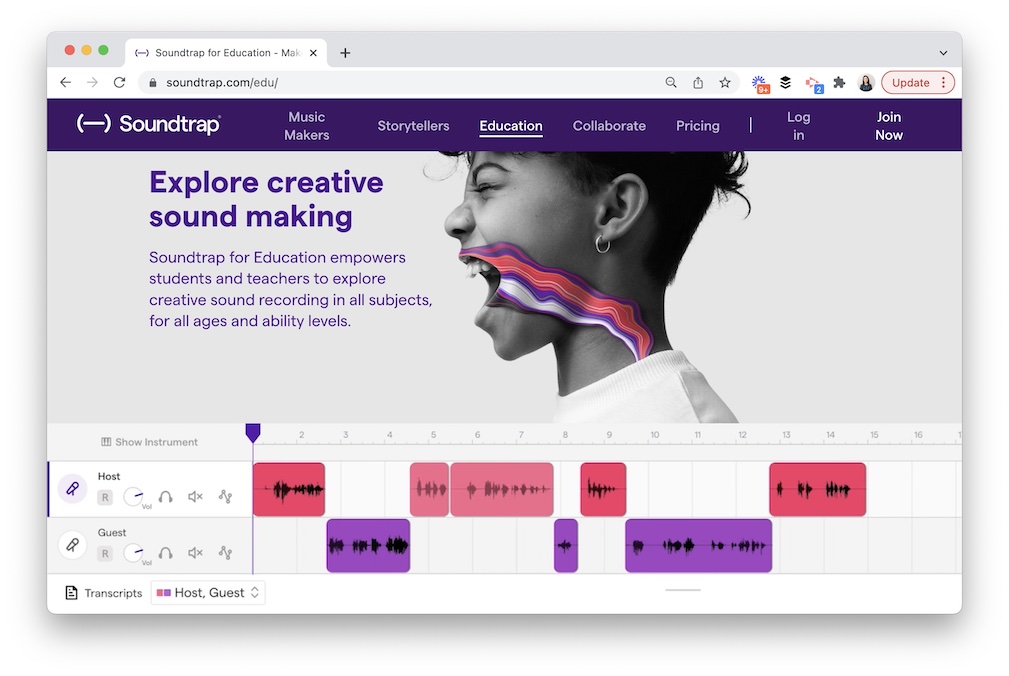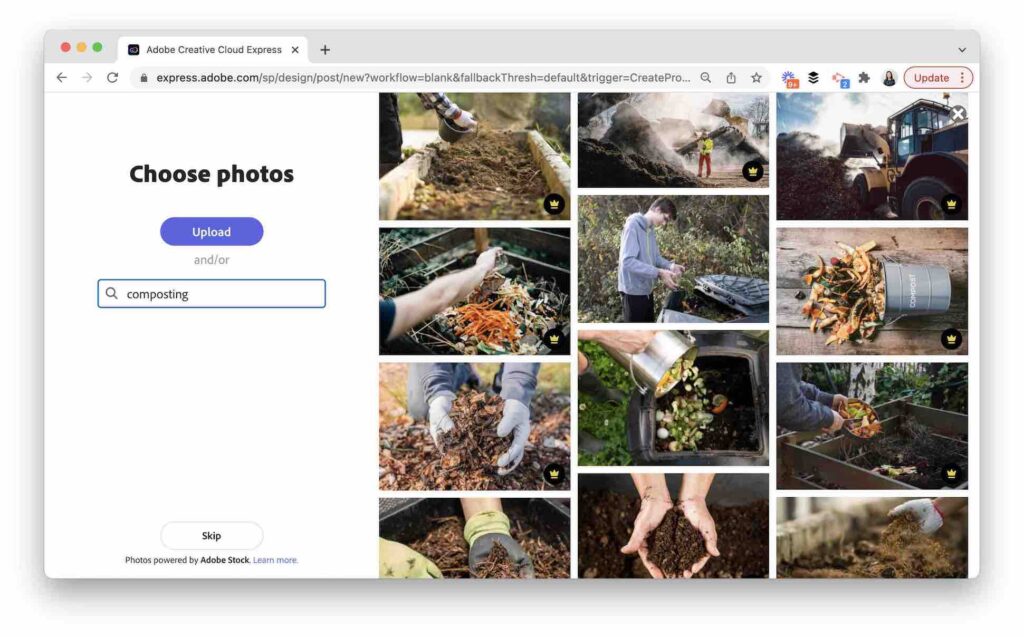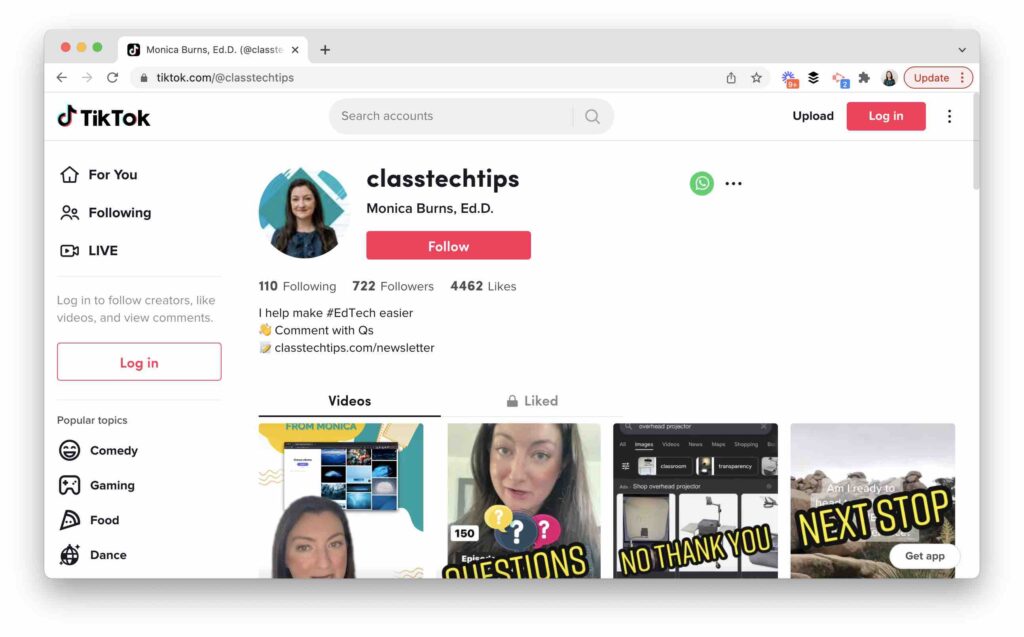If we’re anything alike, there are topics you just can’t stop talking about. I am definitely guilty of being “that” person who talks about the latest piece of advice they heard on a podcast or a recipe from TikTok that they can’t wait to try out. You might also find me going on and on about how fun it was to visit a new school, a new lesson idea I want to try out, or an EdTech tool that totally changed the way I think about [fill in the blank]. In today’s blog post, I put together a list of five creative ways to share your passions. You’ll also find creative classroom ideas to go along with each one.
Some of these are part of my regular practice of sharing things I’m passionate about. Others I’ve tried a few times and loved, even if they’re not my daily, weekly, or monthly way of sharing.
Best of all… all of these ideas are ones your students can try, too.
Creative Ways to Share Your Passions & Classroom Ideas
If you’d like to dive into the topic a bit further, check out this webinar replay. I joined the team at Edmodo for this special event. You can find the link here to play on demand.
Let’s dive into the list together!
Start a podcast
Creating a podcast from scratch can seem like an intimidating idea on the surface. But it might be easier than you think. Mobile and computer friendly recording tools, even popular ones like Zoom, can help you get started.
What this looks like for you…
Choose a topic and make an outline of what you want to talk about. This could be a solo endeavor or one you take on with a friend or weekly guests. Record the audio and follow the directions on this page to load it on a podcast feed. Share the link to your podcast with anyone else you know who shares your passions.

What this can look like for your students…
Try out a popular tool like Soundtrap for Education or GarageBand. Ask students to write a script or make an outline. You may want to share some podcast episodes to act as an exemplar if they are new to this format. Here’s an episode of my podcast that shares some great ideas for sharing podcasts with students.
Write a blog post
A blog post is typically one entry in a series of updates. A blogger usually commits to writing a series of blog posts over a period of time. I am super passionate about EdTech and have published a blog post (or three) almost every week for ten years. Are you and your students looking for a smaller commitment? You can also write a blog post for someone else. Then, submit this writing piece to a publication that can post and share it for you.
What this looks like for you…
You might decide to write one blog post a month about the topic you are interested in. There are options for setting up your blog using a tool like WordPress or Squarespace. Or you can publish by creating an account on a platform like Medium. If you’re just getting started, you might even decide to reach out to blogs in that field that already have an audience. For example, when I first started writing about EdTech, I connected with Edutopia and gave them a few pieces to publish on their platform.
What this can look like for your students…
Since blogging is usually a text-based product, students can write about their passions in short form or long form. They can use a voice-to-text tool if that provides an entry point for writing about their passions. An audience for a student blog could be large, including publishing on a school website or a class Google Site. Or it could be smaller, using a tool like Seesaw Blogs or publishing a page using Adobe Creative Cloud Express for Education.
In my book, EdTech Essentials: The Top 10 Technology Strategies for All Learning Environments, I have an entire chapter dedicated to helping students connect with an audience. We look at the concept of sharing with a small audience (more local and private) or a large audience (more global and social). Here’s an excerpt:
“Connecting student work to an audience is perhaps more important than ever, as online sharing prevails in our digital world. Students are familiar with what it means to have content shared online, and some may even be aspiring content creators…Students should see the value in the time they are committing to a task, and digital tools can help accomplish this goal by facilitating and fostering connections to authentic and relevant audiences.” (p. 78)
Note: Download the free study guide for EdTech Essentials on this page.
Create a collage
Do you love taking pictures of things you’re passionate about? I am far from a food or travel blogger, but it hasn’t stopped me from snapping tons of pictures that fall into these categories. A collage is a visual representation that combines a few different pictures together. It’s an excellent option for transforming a device full of photos into something that is ready to share.
What this looks like for you…
You might create a collage and post it on a social media space like Instagram. You can combine it with a short piece of text, perhaps using the first paragraph of a blog post you wrote to accompany the picture. Creating a collage could happen with a tool like Adobe Creative Cloud Express or Canva. These tools let you choose a color palate, and you can even try out this special challenge to create a logo to accompany it.

What this can look like for your students…
Students can create a collage using a digital tool and print it to display in a physical space. Or they can take a spin on this and create a collage using pictures, glue, and all the things, and snap a picture to make it digital. Students can use the Education versions of Adobe Creative Cloud Express (for Education) and Canva (for Education). Which will introduce them to professional tools that are definitely accessible for students.
Start (or join) an affinity group
If the term “affinity group” isn’t in your everyday vocabulary, the concept surely is one you’ve come across in the past. The definition Merriam Webster provides is, “a group of people having a common interest or goal or acting together for a specific purpose.” An affinity group is perfect for sharing a passion you have and can take many forms. It can also provide a way for you to collaborate on a creative endeavor.
What this looks like for you…
You might find or start a group of people who have an interest in a similar topic. With digital tools, you can meet together to make a plan for a creative endeavor like creating a website where each member contributes stories or recording a podcast where you all talk about the same topic from a different perspective. Google Sites is great for building a collaborative website, and Soundtrap lends itself to asynchronous podcast recording.
What this can look like for your students…
Students can come together with a group in their school or a group of students from a partner school to talk about their interests and passions. They might use a tool like Flipgrid to post questions or share ideas and students can log in on their own schedule to share. Flipgrid lets students flex their creativity muscles by using green screens, adding stickers, and so much more. As a teacher, you can stitch these videos together for a celebration. Here’s a post from the archive featuring Flipgrid and book clubs – one type of affinity group.

Document on video
Regular readers of the blog know that I’m a big fan of video content. From quick videos on TikTok to Reels on Instagram, this is definitely a medium where I love to share my passions. If writing a blog post, or joining an affinity group doesn’t feel like your style, you might instead decide to jump behind the camera and talk about something that you love. Whether it’s you or your students, having a clear topic, a quick outline, and a purpose for each video is certainly important.
What this looks like for you…
You might decide to capture your passion on video by creating quick 30-second videos that tell people a fun fact or helpful tip about your area of interest. This could be something you post on a social media platform and share using hashtags relevant to your industry.
What this can look like for your students…
Your students might create a video where they talk about a topic they love using a tool that lets them submit a response using their device’s camera. Seesaw and Flipgrid are two great options, or students can use the video tool in Book Creator to add a video with captions to a page in their book. If you decide to share student videos (with permission) to a larger audience, the Quick Action tools in Adobe Creative Cloud Express can come in handy if you need to trim or resize a video.
Ready to get started sharing your passions with the world? Try out one of these creative ways on your own or with your students. These classroom ideas are ready for you to customize for your students. You can capture how much you love a particular topic and let the whole world know about your interests, too!







